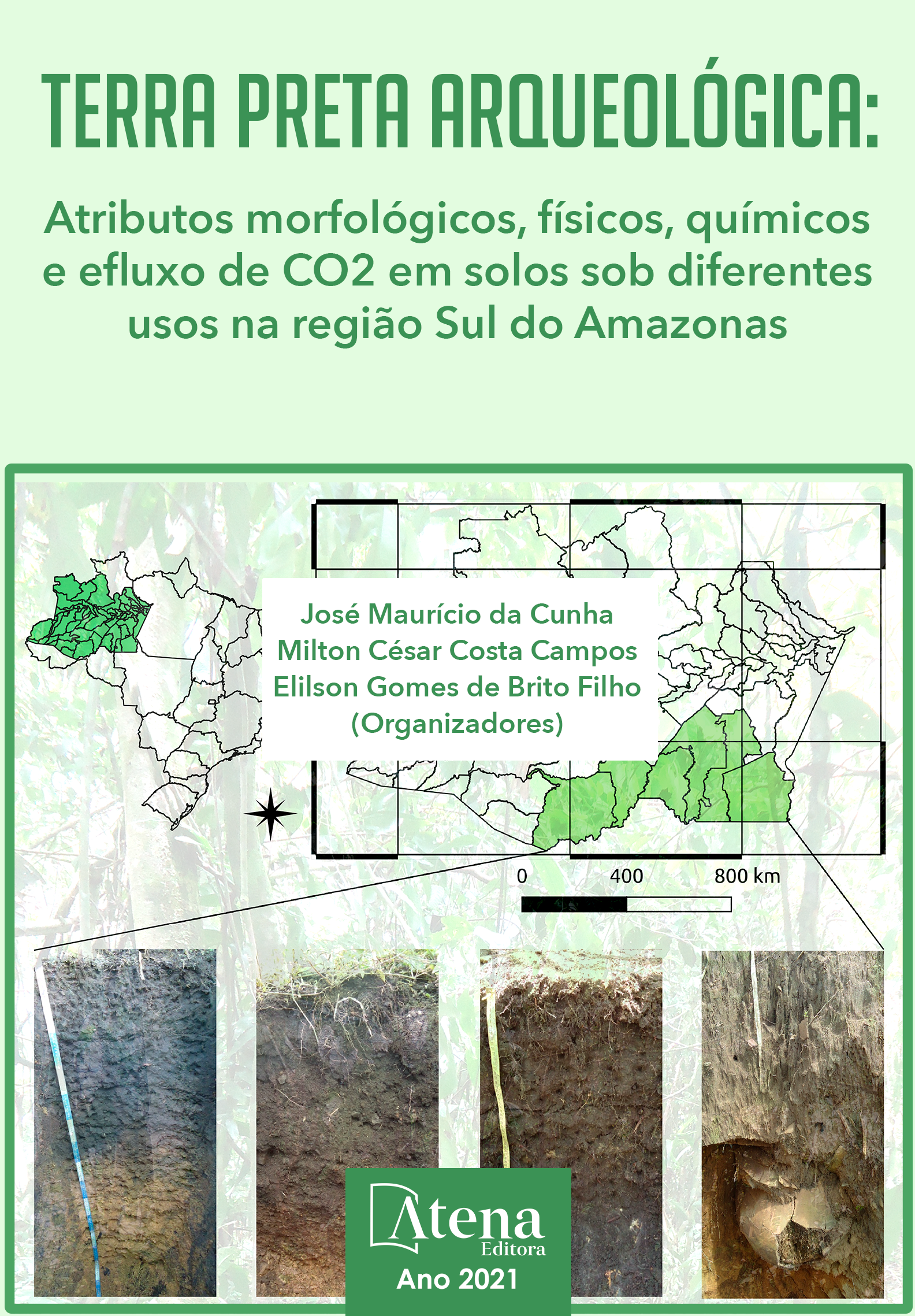
9. ATRIBUTOS FÍSICOS DO SOLO E ESTOQUE DE CARBONO EM ÁREAS DE TERRA PRETA ARQUEOLÓGICA SOB PASTAGEM E FEIJÃO GUANDU EM NOVO ARIPUANÃ, AM
Para se avaliar a qualidade do solo e a sustentabilidade em ambientes de Terra Preta Arqueológica da Amazônia, é importante a caracterização dos impactos de uso de solo dos diferentes tipos de cobertura. Sendo assim, o objetivo deste trabalho foi avaliar os atributos físicos e o carbono orgânico em áreas de Terra Preta Arqueológica, no município de Novo Aripuanã, AM, sob os cultivos feijão guandu (Cajanus cajan) e pastagem, em comparação com a cobertura de floresta, com base em técnicas de estatística tradicional univariada e multivariada e de geoestatística. Para isso foram delimitadas malhas com espaçamentos regulares e 88 pontos amostrais georreferenciados por malha. Foram coletadas amostras em blocos de solo com estrutura preservada e anéis volumétricos, para a determinação das propriedades físicas e do carbono orgânico do solo. O feijão guandu e pastagem diferem estatisticamente da floresta, que apresentaram características de estabilidade dos agregados acima da média, mas características texturais e carbono orgânico abaixo da média. O modelo exponencial, pelo semivariograma escalonado, mostrou que atributos físicos do solo apresentaram predominância, com grau de dependência de forte a moderado, sendo a área sob feijão guandu com maior variabilidade dos atributos do solo.
9. ATRIBUTOS FÍSICOS DO SOLO E ESTOQUE DE CARBONO EM ÁREAS DE TERRA PRETA ARQUEOLÓGICA SOB PASTAGEM E FEIJÃO GUANDU EM NOVO ARIPUANÃ, AM
-
DOI: 10.22533/at.ed.2002107079
-
Palavras-chave: Aripuanã, química e física do solo, TPA sob floresta, usos do solo.
-
Keywords: Aripuanã, land use, TPA under forest.
-
Abstract:
In order to evaluate soil quality and sustainability in Amazon Archaeological Dark Earth environments, it is important to characterize the impacts of the use of different cover types. The objective of this work was therefore to evaluate the physical attributes and organic carbon content in areas of “Terra Preta Arqueológica”, in the municipality of Novo Aripuanã, AM, under the cultivation of pigeon pea (Cajanus cajan) and pasture, in comparison with forest cover, based on traditional univariate and multivariate statistical techniques and geostatistics. In order to accomplish this, grids with regular spacing and samples with 88 georeferenced points per grid were delimited. Samples of soil blocks with preserved structure and volumetric rings were collected to determine physical properties and organic carbon content. The pigeon pea and pasture soils differ statistically from that of the forest and presented above-average aggregate stability, but texture and organic carbon characteristics were below average. The exponential model showed that the physical attributes of the soil predominated, with a strong to moderate degree of dependence, with the area under pigeon pea presenting the greatest variability of soil attributes.
-
Número de páginas: 30
- Denilton Carlos Gaio
- Milton César Costa Campos
- Marcelo Dayron Rodrigues Soares
- Douglas Marcelo Pinheiro da Silva
- Alan Ferreira Leite de Lima
- José Maurício da Cunha


